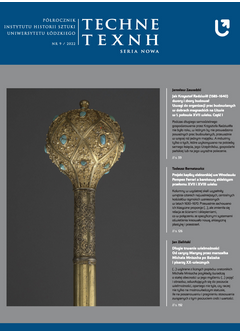Pałac Przebendowskich w Warszawie i geneza jego architektury
Przebendowski Palace in Warsaw and the genesis of its architecture
Author(s): Jakub SitoSubject(s): Architecture, Local History / Microhistory, 17th Century, 18th Century
Published by: Wydawnictwo Uniwersytetu Łódzkiego
Keywords: Przebendowski – family; Warsaw; Wien; residential architecture; Crown Treasurer; Saxon era;
Summary/Abstract: The late Baroque palace of the Grand Treasurer of the Crown, Jan Jerzy Przebendowski in Warsaw, built – as previously unknown sources indicate – in the years 1720–1727, has long attracted the attention of architectural historians with its distinctive form. It represents a type of detached residence, with corps-de-logis essentially two-story, with rectangular, single-axis pavillons at the corners. What distinguishes it from the numerous capital palaces in the era of Augustus II are two interconnected, two-storey blocks built into the body on the main axis of the palace: from the garden, a quadrilateral with a vestibule and a hall on successive storeys, and from the front, an oval protruding towards the front courtyard, with a staircase leading to the piano nobile. The use of an oval, rare in Poland, with a surprising communication function, is the most characteristic motif of the building. The spatial organization of the Przebendowski's palace directs our attention to the circle of palace architecture in Vienna at the turn of the 17th and 18th centuries. Particular analogies connect the Warsaw building with the designs of such architects as Johann B. Fischer von Erlach, Giovanni Battista Alliprandi, and Johann Lucas von Hildebrandt. The thesis that the design of one of the Viennese architects of the Reichstil era was used in Warsaw gains credibility in the light of the information about the Przebendowski's intent of future use, not as his own seat, but his half-cousin – Jan Przebendowski, who in 1714–1715 served as an envoy of the Polish Commonwealth in Vienna. The exaltation of the family by creating a magnificent residence was a typical manifestation of the Baroque magnificentia, an attitude which was particularly close to the families in the ascendant, as Przebendowski family was.
Journal: TECHNE. Seria Nowa
- Issue Year: 2022
- Issue No: 9
- Page Range: 101-118
- Page Count: 18
- Language: Polish

